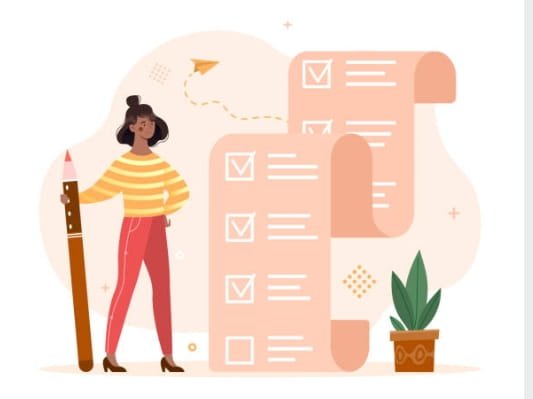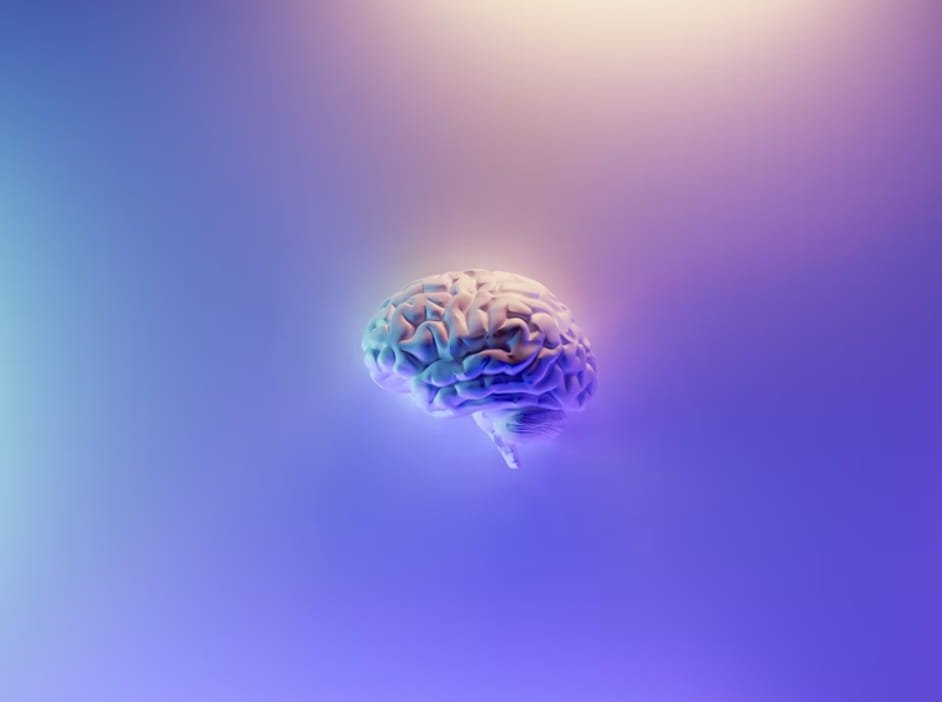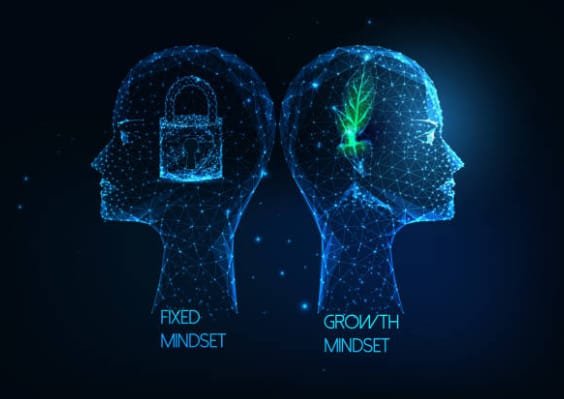
by admin | Jun 10, 2022 | General, Mind
Unexpected Ways To Be Creative
How To Keep Your Creative Juices Flowing While Having Novice Experiences Creativity can be very elusive sometimes. Many people have experienced what is called an “artist block” and know how frustrating it can be, especially if you have to meet specific deadlines. Feeling inspired and in your element is crucial when writing, making music, painting and the likes.
Creativity, however, is not useful only to artists. On the contrary, it has its applications regardless of your working environment. By finding inspiration in the surrounding world and utilizing it to make something yourself, you leave your own unique imprint and induce a massive mindset change.
Not only that, but you are also connecting to the tools you’ve used and giving an outlet to your thoughts and ideas. The sense of fulfillment when you see something you’ve made yourself is like nothing else. Creativity applied does indeed shift your mindset towards growth, and this is why we have made a list of activities that boost your creativity.
We hope you find them interesting and maybe try some yourself!
Cook Something

Food is one of the few necessities which can double as a hobby or creative outlet. We all need to eat; however, not all of us have tried cooking something difficult or arranging a dish to look a certain way. It’s a good idea to cook something when you feel stuck not only because food is necessary, but because we often want to eat something delicious and beautiful when we feel down.
Comfort food is a thing for a reason, after all. And what better way to make yourself feel better than by making something tasty that also looks great. It can be as simple as your favorite three-ingredient meal, just with some added twists or decorations. Or it can be some intricate dish you haven’t tried yet but are definitely dying to.
Whichever one you choose, you will likely feel a bit better after spending some time in the kitchen and enjoying the outcome.
Make Something Ugly

This may sound counterintuitive at first. A lot of us are used to only focusing on the end result. If something isn’t perfect at the end, there is no use in making it. That’s really not true. The process itself is just as important because that’s when we learn new things.
So instead of fixating on what the end product will look like, try making something just for the sake of it. Not everything we do has to be store-bought quality, and by having fun while making something that looks funny, you will remind yourself of that. Many people are so pressured to have their end result exactly the same as it is in their heads that they often don’t even try to make the thing in the first place.
By detaching yourself from that fear, you can start creating what you want to just because you find it fun. And that’s a pretty freeing way to look at things.
Go To The Garden

Nature is the best source of inspiration, and you can see its influence in almost every artist’s work throughout the centuries. Not all of us are painters or sculptors, however, so how can we use this wonderful source? The answer is actually surprisingly simple – try making your own garden. Whether you have your own backyard or live in an apartment on the 14th floor, taking care of a few plants is always possible.
The nurturing feeling this activity provides is synonymous with a good time. Once you get started, you can even use what you grow in different things. If you’re growing fruits and vegetables, or even spices, you can use them to later cook something yourself (a complete circle, huh). And if you’re more into flowers and other kinds of plants you can always decorate your house with them or herborize some. You can even use some fruits as decorations (dried lemon slices look great on a Christmas tree).
Talk To Different Artists
These are some of the most interesting people to have a conversation with. Their worldviews, past adventures, plans for the future – everything can be a source of inspiration. And the best part is most of the time they inspire you for your own ideas. Just by listening to their ideas, you often start thinking of your versions of them which is creativity already at work.
If you’re an artist yourself, you can start collaborating with artists in different mediums to yours and do some outstanding projects. However, if you aren’t, you can still be motivated by their creations and maybe even dare to make something yourself. And even if none of this works, you are definitely having some fascinating conversations and making some friends along the way.
Build Something

This can mean pretty much anything, which is the best part. You can start small and make a vase out of a wine bottle, for example. Or, if you’re feeling very creative, try making your very own coffee table or even a cupboard.
You can choose the materials or just reuse some already made items. Building and crafting bigger, more complicated objects gives you a spatial way of thinking which is sadly not commonly used. You may also encounter some difficulties requiring a more innovative approach during the process, which boosts your creative decision-making skills.
If you feel this is a bit too much for you, a fun way to still try this idea is to make miniature prototypes out of simple materials. Ice cream sticks or the cork used to close wine bottles are excellent materials to craft a mini version of some of the bigger items you like.
Planes, cars, or entire houses can be built with them, some glue and some wire, making great home decorations. Using different materials and tools to those you are used to in your everyday life breaks you out of your comfort zone and puts you in an entirely new environment. And that’s exactly where the magic of creativity can be found.
Final Thoughts
Allowing yourself to try things for the first time and not worry about the end product makes you look at the world through a different lens, which is often a more positive one.
Unleashing your creativity will also be useful in your daily life. Yes, it broadens your horizons, and yes, that’s a wonderful thing, but it does something else too. It reshapes your view and mindset towards your normal schedule and activities. Most people who are creative in this way say their routine has benefitted too because they appreciate different aspects of it.
So why not choose one of our ideas and start your adventure? Let’s get to it!

by admin | Jun 10, 2022 | General, Health, Mind
Unlearn These Habits for a Better You
Unlearning is the new learning in the journey of having a blissful quality of life. People say, learning a new good habit can be cumbersome but have you ever tried to unlearn a bad habit? It is much harder to unlearn a bad habit. We, as humans, catch up on bad habits very quickly and let them settle just as our second nature.
There are some habits that one should totally unlearn to grow and stimulate better life decisions.
Fear Of Change

You don’t have to be happy about everything that happens in your life. However, you should not let your fear stop you either. We are all aware that things could be much worse at any time in our lives. Also the fact that you are reading this article right now proves that you are some of the world’s wealthier and more privileged individuals.
Life is changing way quicker than ever before, and we may be confronted with new problems every day. As a result, the most capable of adapting individuals will always win in the long run. It’s much harder than it sounds, but it’s probably one of the most underappreciated words of advice. Even if changes are uncertain, they almost always have a positive aspect. Be brave, focus on the positive aspects, and try new things.
Procrastination

No matter what your age is, you will always end up procrastinating! We procrastinate because we subconsciously believe that the task ahead of us is too difficult. So, next time you’re in this scenario, make a habit of breaking down your activity into smaller, more manageable chunks.
Delaying something inevitable in your schedule is never beneficial, it only ends up making the timetable more congested and leaves you with greater stress than what you already had. Therefore, always aim to complete your tasks on time and stop procrastinating to let go of the habit of procrastination.
Comparison

Comparing yourself to others is not only disrespectful of your own capabilities but also a total disregard of others’ status. Being jealous of others’ achievements without knowing what they have been through in their actual life is never justified nor advised. Never compare yourself with others. Always compete with yourself and beat YOUR previous best.
Being Afraid to Make Mistakes

Isn’t making mistakes just an aspect of our human nature? Everyone makes mistakes but there are very few people who accept them and rectify them. Following the notion of hard work will always lead to success is one of the biggest mistakes that people make. Try to embrace your mistakes and it’s okay to make them. Never go too hard on yourself for making mistakes and instead, try to learn from them.
Obsessions with Other Peoples’ Opinions
How often do you feel discouraged because of the opinions of others? The chances are that your answer is too often. The scary part is that you will never be able to appease everyone. The good news is that it makes no difference. You only have one life, so don’t bother wasting it by trying to live up to the expectations of others.
You can’t be everyone’s favorite, but you can be your own hero and save yourself. Stop suppressing your inner voice to please others and start shining your light on the world. Start unlearning bad habits and learning the ways to improve the quality of life. No matter what your definition of quality of life is, just make sure to enjoy every moment and reap the utmost benefits from every day that you are living.

by admin | Jun 10, 2022 | Mind
What Happens In The Brain When We Are Afraid
The Science Behind One Of Our Primal Emotions Fear is one of our driving forces. It can make us run faster, think more critically, and have way more strength than usual within mere seconds of spotting a threat. It can also be paralyzing, however, or make us think irrationally in completely normal situations.
From goosebumps to phobias, the different processes we can go through when we are afraid are proof that this is one complicated emotion. Here we try to break down what happens in our brains when we see danger and start being scared.
Some Basics

As we mentioned before, fear is one of our primal emotions. It’s been hardwired in the brains of almost all species since the dawn of time. It’s a very complex reaction that holds within it the simplest reflexes a snail has when something touches its antennas as well as the paralyzing anxieties some people have seemingly out of nowhere.
“Extreme” fear reactions, however, are usually what we think about when someone mentions fear. These include surges of strength, critical thinking, and changes in the chemistry of our bodies and are only possible thanks to centuries of evolution. Usually, what happens when we get scared is our heart rate and blood flow increase, allowing for muscles to fill with blood and be ready to react.
Our body also releases large doses of epinephrine and glucose, creating a pool of energy waiting to be used at a moment’s notice. This is all in preparation for the immediate response we decide would be best and similar processes happen in almost all animals. Funnily enough, goosebumps are also an evolutionary idea – the muscles at the base of each hair tighten, which makes it stand up – this has the purpose of changing the silhouette of the animal, making it look bigger and more scary.
A trick which we have kept through the centuries, regardless of the fact that it doesn’t change our physical appearance as much. Where we differ from other species, however, is that we have evolved to achieve an alert state or even a fear response to certain written words and notes.
The first can be explained with an example of when we see a sign that says “dangerous road ahead” – we start being more careful, and our senses are sharpened – essentially achieving an alert state.
The second can be, for instance, when someone informs you that there is a flood – your heart rate speeds up, your muscles tense, and you immediately start thinking of how you can escape – this is the fear response.
How Our Brains React

Our answer to fear starts in a part of the brain called the ‘amygdala,’ which is a small cluster of nuclei right in the center of our brains. It’s responsible for our fight or flight reaction and readies our bodies for one of these two options by releasing different stress hormones and preparing motor functions.
Dilated pupils, increased heart rate, and redirection of stronger blood flow are all effects of what the amygdala does. The amygdala also sends signals to the hypothalamus, which works with the hormonal and nervous systems. This is how the body starts preparing the different chemicals and processes to react to the threat.
Some of the chemicals our bodies release when we are scared are similar to those we have when we are excited, which explains why some people enjoy extreme activities like bungee jumping for example. The brain goes through most of the processes related to fear but realizes that the situation isn’t that threatening, so we don’t stay in a state of panic, so instead, we enjoy the boost our bodies have.
This means the “sensible thinking” part of our brains overpowers the primal automated response we have to threats, but we still get to experience the rush in the beginning.
This distinction is made by another very important part of our brains. This part is highly active when we are afraid, and it’s called the hippocampus. Its job is to figure out if the threat is as real as the amygdala deems it and control our response. If our fear response isn’t justified, the hippocampus sends out a message to dampen the amygdala’s activity and to calm us down.
Conclusion
Fear is a complicated emotion.
It’s a part of almost all animals, and it’s the best emotion to keep us safe in threatening situations. This doesn’t mean, however, that fear is always rational, which is why our brains constantly go through different checking mechanisms to make sure the valuable energy we dedicate to different responses isn’t wasted.
How fear works can be separated into two main parts – when we are afraid, some processes are automated while others are our conscious decisions. This divide allows us to control our emotions and reactions and get out of the scary situation as quickly as possible. Do you know other interesting things about fear? Comment below!

by admin | Jun 9, 2022 | Health, Mind
What is Reiki?
Reiki is a Japanese technique for stress reduction and relaxation that also promotes healing. It can be used for self-healing or as an alternative medical treatment. Reiki is said to soothe both the body and mind.
Reiki is a holistic healing therapy that was developed over the course of more than two hundred years by Mikao Usui. Reiki can be used to heal many different types of ailments, such as emotional, physical and spiritual ailments. With long-term sessions, people may experience lasting relief from chronic pain, stress, depression, and anxiety.
What is the goal and how is it carried out?

The goal of reiki is to align the person’s energy with his or her higher self in order to achieve complete balance. This process removes any blockages that are preventing this healthy flow of energy. Reiki healing is done through the use of hands-on treatments, meaning that it does not require any needling or invasive techniques. It is also possible to deliver it by distance healing.
It can be delivered in person, by phone, or through the internet. Although it is a form of energy healing that originated in Japan it has spread worldwide. Practitioners believe that this energy may be channelled into people’s aura to promote self-healing from injury and disease. Reiki practitioners use their hands or sometimes their whole body to channel the life-giving energy to heal another person, either through physical contact or at a distance, even if they are not present at the time.
What does reiki mean?

The word “reiki” is made up of two words ‘’rei’’ meaning Gods wisdom or higher power and ‘’Ki’’ meaning life force energy. There for one could say it has an overall meaning of “universal life energy.” Reiki masters are thought to have the ability to channel this universal energy and transmit their life force through their hands into other people and objects around them in order to heal them.
Reiki Symbols
Symbols are used in reiki to invoke the desired energies. Symbols can be drawn on the body with a stick of incense, or they can be projected onto a person or an object. When we create symbols with our hands in reiki sessions, it creates an energetic circuit which is then sent to the recipient for healing. Symbols are objects, characters, words, or pictures that represent something abstract. They are often created by drawing a shape in the air with our hands and represent spiritual ideas like peace and love.
The symbols in Reiki are not words. They are drawn images that represent universal life force energy. The symbols in reiki were developed by Mikao Usui, a Buddhist monk who believed that the symbols could help to heal others and themselves.
Cho Ku Rei is one of the most known reiki symbols, but the words Cho Ku Rei carry an interesting mix of meanings and beliefs, for example: it is a Japanese term meaning to write quickly. It was first identified by the author of the book “Writing with speed: how to be productive in less time” (2006), who noted that the velocity of writing increases with practice and can be increased even further through a series of mental routines.
Cho Ku Rei is not about how many words one writes every minute; rather, it focuses on how many finished words one writes in a specific time period. Cho Ku Rei is also the Japanese belief that a person’s spirit leaves their body when they sleep and wanders off to various places. It’s believed that the spirit of someone who died will return to visit their home or may stay with family members.
Japan is one of the few countries in which it is still socially acceptable to wear white after a death. Cho Ku Rei, or “death attire,” is seen as an extension of deep respect for the deceased.
This custom has its roots in ancient Japanese culture, and it came from the Buddhist tradition that encouraged individuals to wear white clothing after death. The Buddhist tradition started to spread throughout Japan, with people from different sects all following this trend. Eventually, it became a tradition that helped with mourning and grieving when a family member dies. Mourning rituals have been followed in Japan for centuries and Cho Ku Rei has been an important part of this ritual since its inception.
Cho Ku Rei, in Usui Reiki meaning “source of light,” is a power symbol that has been used since the days when reiki was first brought to the West. It is a systematic procedure with many steps, and it has been designed to bring about specific results. The practitioner can use it for self-development or for healing others in various situations.
Other symbols are:

Sei He Ki – The harmony symbol – for when you are in need of purification and need balance and harmony to be restored.
Hon Sha Ze Sho Nen – The distance symbol – it means having no present past or future and therefore transcends time and space.
Who can benefit from reiki?
Reiki can be beneficial for everyone who is willing to try and experience it. But does this mean that it is a good idea for every member of the family to get a session from a reiki healer? Reiki practitioners believe that the benefits of reiki are not limited to their patients. As such, they recommend that any person in the family gets at least one session with them. This way, they can maintain their mental and physical health as well.
Whilst it may not be the choice of healing for everyone, it is for someone who wants to deeply heal. Its gentle, non-invasive and very relaxing.
Who can train in reiki?
It is a technique that has been passed down through generations. The power of Reiki comes from an energy field or life force, which people can tap into and direct with their thoughts. Anyone can use reiki for beneficial purposes – it does not require any complex training to get started and anyone can learn how to do it themselves with guidance from someone who already knows how, such as a reiki master.
Reiki can be used by anyone who is willing to learn. It can provide a sense of peace and a feeling of being cared for. Reiki is becoming increasingly popular in the workplace. There are companies that offer Reiki as an employee benefit in order to help their employees feel cared for.
So, if you are looking for a new healing modality, this one is worth exploring.
Disclaimer Note: It’s important to note though, that just because something is natural does not mean zero risk. While many natural therapies are very low risk there still may be complications, contraindications and contra-actions.
The internet is full of information on how you can cure yourself with natural remedies, therapies, fitness equipment and more, but we recommend that you seek out a Qualified Natural Practitioner, Reiki or Energy medicine expert and always consult a Doctor before trying any new things. Never stop taking any prescribed medication without speaking to your health practitioner first.
Thankyou – This article is for entertainment and informational purposes only.

by admin | Jun 9, 2022 | Mind
What Is The Growth Mindset ?
If we put things black on white, we’d realize that the majority of humans come to this world with the same “specs”, so to speak. We all have a brain, body and all our bodily systems work on the same principles and run the same chemistry. But what is it that actually makes a person successful and different from other people? Well, the secret, perhaps, lies not in lucky circumstances, but in the mindset, which in turn controls our actions and reactions.
Think About It…
If you look into your own life, you may come to realize that though you are creative, your mindset has probably, at one point, had a big influence on you and your overall success.
Contrary to popular belief, skills and knowledge are not a given, but are rather developed through time.
How Important Is Mindset, Really?

Now, setting bad luck and unsuccessful ventures aside, we can tell you one thing – Your thought patterns lead to certain actions and behaviors. Even more so, your thoughts and feelings are literally the CODE of your brain’s workings. Whatever you think about, you attract and find more of!
For example, if a friend or a colleague starts talking to you about a potential business idea, do not instantly start talking about why it can’t happen. If you fix your mindset on the reasons why it cannot happen, you will only find more and more reasons why it can’t happen. Instead, try and think of those things as “obstacles along the way to success”, rather than “reasons why it cannot happen”.
Of course, we are not telling you to be delusional and emit fake positivity about projects, relationships, business ideas, etc. What we are telling you is that you should consistently put in the work to shift and transform your own mindset to “What is the solution for this?” rather than “Here’s why this is impossible”.
Fixed Mindset VS Growth Mindset

Before transitioning and transforming your mindset to what we call “growth mindset” you have to become aware of your current mindset about certain things. In most cases, we, people, have limiting beliefs about many aspects of our lives. These limiting beliefs cause us to stagnate on one level of development, which in turn leads to the inability to outdo yourself.
This is EXACTLY what the “fixed mindset” is!
Here are some traits of the fixed mindset:
- You give up easily
- Putting extra effort in feels bad
- You don’t see how you can further develop your skills
- You stay true to a certain set of behaviors
- You don’t take on new ideas/ventures
- You don’t take risk
- You can’t take criticism
On the other hand, you have the “growth mindset”, which implies that you are always a student in the school of life and your skills/knowledge are always due for change and improvement.
The growth mindset, at its very essence, is the belief/feeling that we, ourselves, are in control of our personal development, skills, knowledge, opportunities, etcetera.
Here are the most common traits of the growth mindset:
- You are always in for extra effort and it feels meaningful
- You always take on learning new skills/knowledge
- You analyze your behaviors/emotions and work on them
- You take risks
- You listen carefully and don’t react emotionally when someone is giving you criticism
- You seek to network with people of higher standards/more successful individuals
Take Home Message
Establishing a proper feedback loop, while taking risks and challenges, is essentially at the very core of the growth mindset. These are the things that attach meaning and actually make you feel like it is worth doing. Remember, the fixed mindset only sees the problems, while the growth mindset sees the problems and their solutions.
The fixed mindset sees extra effort as unnecessary, while the growth mindset is always in the works.
Stay on your game.

by admin | Jun 9, 2022 | Mind
What’s The Difference Between Psychologists And Psychiatrists
How To Distinguish The Two Terms Most People Confuse When new words and terms come into use, it’s easy sometimes to get them confused. Many people get misled by someone else’s explanation of a term that they haven’t heard before and hence spread the wrong information afterward.
This is no one’s fault, but it’s essential to correct your mistakes once you know the correct information. Psychology and psychiatry are both fast-developing sciences, and because of that, we constantly have new terms and definitions in these fields.
Some people, however, tend to confuse the two, and although they are in the same broad area of science, they positively do not mean the same thing. Here we explain where their differences and similarities lie so that you can make sure you’re using the correct words in your next conversation.
The Definition Of A ‘Psychologists’

Alright, now, to understand what the term “psychologist” really means, we have to delve deeper into a couple of things:
- What is psychology?
- What does it focus on?
- What sort of education is needed?
- How do they help people?
- What are the most common practices?
What Is Psychology?
According to the American Psychological Association, the definition of psychology is “The scientific study of the mind and behavior.”
It includes many sub-fields and connects with different sciences (for instance, biology, chemistry, and history).
What Does It Focus On?
Psychology’s main focus and purpose are to describe and explain human behavior with the help of research, statistics, and listening to the individual in question. Next, its idea is to predict what their behavior may be in certain situations and change or control it if that’s needed.
Pretty… Cool, eh?
What Is The Education Required?

To become a clinical psychologist (the most common type one associates with the word), you need an undergraduate degree (four or five years in college). Then, you also need a doctorate/master’s degree in psychology (four to seven years in graduate school).
After that, you need to obtain a license to practice. There are over one million practicing psychologists in the world.
How Do They Help People?
Psychologists help their patients through therapy and behavioral modification. There are many different sorts of therapy that psychologists may choose from as the correct one/ones for their patient, including but not limited to talk therapy, cognitive-behavioral and psychodynamic.
If the individual requires medication, they work with psychiatrists and physicians to provide them with the proper treatment.
What Are Some Common Practices?
A typical therapy session with a psychologist is around an hour or two, and it consists of an honest two-way conversation. In it, the therapist asks questions and assesses the patient’s answers. Then, the psychologist offers advice, points out some critical statements, and focuses the conversation on what’s actually important.
The patient is never judged on their behavior, thoughts, and emotions and is encouraged to say exactly how they feel and what they think in the safe space the psychologist provides.
What they say is also strictly confidential. Sometimes the therapist gives “homework” to the patient. This can take the form of anything – from watching a movie, writing down some thoughts, or taking a walk in a specific place.
What About Psychiatrists?
Okay, now, in short, psychologists strive to understand how people think, feel, and behave, to help them modify certain behaviors.
But what about psychiatrists? Well, let’s do the same breakdown we did above!
What Is Psychiatry?
Psychiatry is the branch of medicine that focuses on diagnosing, treating, and preventing mental and behavioral disorders.
It includes physical and psychological evaluation and considers the patient’s biology, personal history, and neurological state.
What Does It Focus On?
Psychiatrists focus on the mental state of their patients and its relationship to their physical well-being.
They deal with long-term conditions, sudden changes, addiction, and all sorts of disorders.
What Sort Of Education Do You Need?
In order to become a psychiatrist, you need to finish medical school and take a test for a license to practice medicine. After that, you need to complete four years of psychiatry residency training. Most psychiatrists then take a voluntary test to become certified by the American Board of Psychiatry and Neurology.
A good note here is that every certificate needs to be re-issued every ten years. Here’s also an interesting fact: There are approximately 400 000 practicing psychiatrists today.
How Do They Help People?

They often perform complete physical and psychological tests, alongside discussions with the patient himself, to paint the whole picture of their mental state and offer treatment. They can also provide immediate medical help if needed and offer different types of therapy, such as electroconvulsive therapy.
Seeing as they are doctors they can determine if medications are necessary, and prescribe them, as well as appoint therapy with psychologists.
What Are Some Of Their Most Common Practices?
A typical visit to the psychiatrist takes between one and two hours and includes filling some paperwork and assessments followed by some questions. Again, the patient is never judged based on his feelings and thoughts and is encouraged to be as honest as possible. After the psychiatrist has all the information required, he shares his advice on getting the help required.
This often involves working with a psychologist in the form of therapy and medication, if needed. It is common to order some lab tests before prescribing meds for the first time to make sure they will respond in the right way to the patient’s body.
A follow-up visit is also scheduled to ensure everything is going in the right direction.
The Differences
As you can see, though the names sound similar, the two professions are vastly different, mainly in the way they help people. Although they work together, psychologists and psychiatrists work towards bettering the patient’s mental state using different tools. One most commonly being therapy and the other, a full medical evaluation and advice.
It is also crucial to highlight that only psychiatrists are allowed to prescribe medication! Another vital difference is that one has a medical education while the other has a different doctorate degree. Both psychologists and psychiatrists are equally important but for different reasons, and although they often have the same patients, they are not interchangeable.
Realizing the differences between the two will ensure that people get the type of help they need. We hope you enjoyed this article and if so, stay tuned with our blog for more articles like this!






























